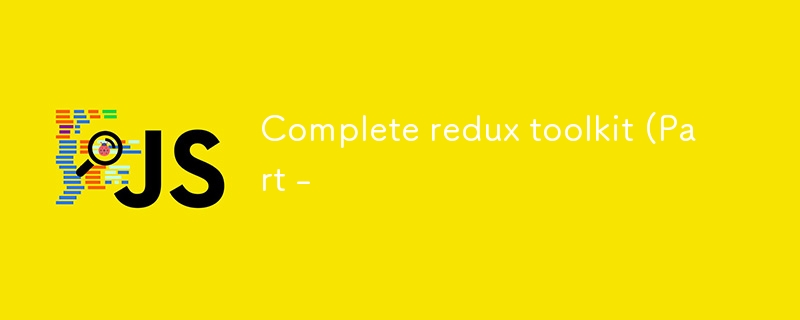

In this part we will cover RTK query
1. What is RTK Query?
While Redux Toolkit provides powerful tools to manage state and asynchronous logic, it still requires significant boilerplate code to handle data fetching and caching.RTK Query, introduced in Redux Toolkit v1.6, aims to solve this problem by providing a set of powerful tools for efficient data fetching and caching with minimal setup.
Key features of RTK Query:
To get started with RTK Query, we need to define an API service that specifies how to fetch data and what endpoints are available. Let’s create an example using a simple posts API.
Create a new file named postsApi.js in the features/posts directory. This file will define the API endpoints for fetching and mutating posts.
// src/features/posts/postsApi.js import { createApi, fetchBaseQuery } from '@reduxjs/toolkit/query/react'; // Define an API service using RTK Query export const postsApi = createApi({ reducerPath: 'postsApi', baseQuery: fetchBaseQuery({ baseUrl: 'https://jsonplaceholder.typicode.com/' }), endpoints: (builder) => ({ fetchPosts: builder.query({ query: () => 'posts', }), addPost: builder.mutation({ query: (newPost) => ({ url: 'posts', method: 'POST', body: newPost, }), }), }), }); // Export hooks for usage in functional components export const { useFetchPostsQuery, useAddPostMutation } = postsApi;
Explanation:
Add the postsApi reducer to the store and configure middleware to enable caching and invalidation.
Update store.js to integrate postsApi:
// src/app/store.js import { configureStore } from '@reduxjs/toolkit'; import { postsApi } from '../features/posts/postsApi'; const store = configureStore({ reducer: { // Add the generated reducer as a specific top-level slice [postsApi.reducerPath]: postsApi.reducer, }, // Adding the api middleware enables caching, invalidation, polling, and other features of RTK Query middleware: (getDefaultMiddleware) => getDefaultMiddleware().concat(postsApi.middleware), }); export default store;
RTK Query generates custom hooks based on the endpoints defined in the API service. These hooks are used to perform data fetching, mutations, and manage caching automatically.
Create a PostsList.js component to fetch and display the list of posts.
// src/features/posts/PostsList.js import React from 'react'; import { useFetchPostsQuery } from './postsApi'; const PostsList = () => { const { data: posts, error, isLoading } = useFetchPostsQuery(); if (isLoading) return Loading...
; if (error) return An error occurred: {error.message}
; return ( Posts
{posts.map((post) => ( - {post.title}
))}
); }; export default PostsList;
Explanation:
Create a AddPostForm.js component to add new posts using the addPost mutation.
// src/features/posts/AddPostForm.js import React, { useState } from 'react'; import { useAddPostMutation } from './postsApi'; const AddPostForm = () => { const [addPost, { isLoading }] = useAddPostMutation(); const [title, setTitle] = useState(''); const [content, setContent] = useState(''); const handleSubmit = async (e) => { e.preventDefault(); if (title && content) { await addPost({ title, body: content }).unwrap(); setTitle(''); setContent(''); } }; return ( Add a New Post